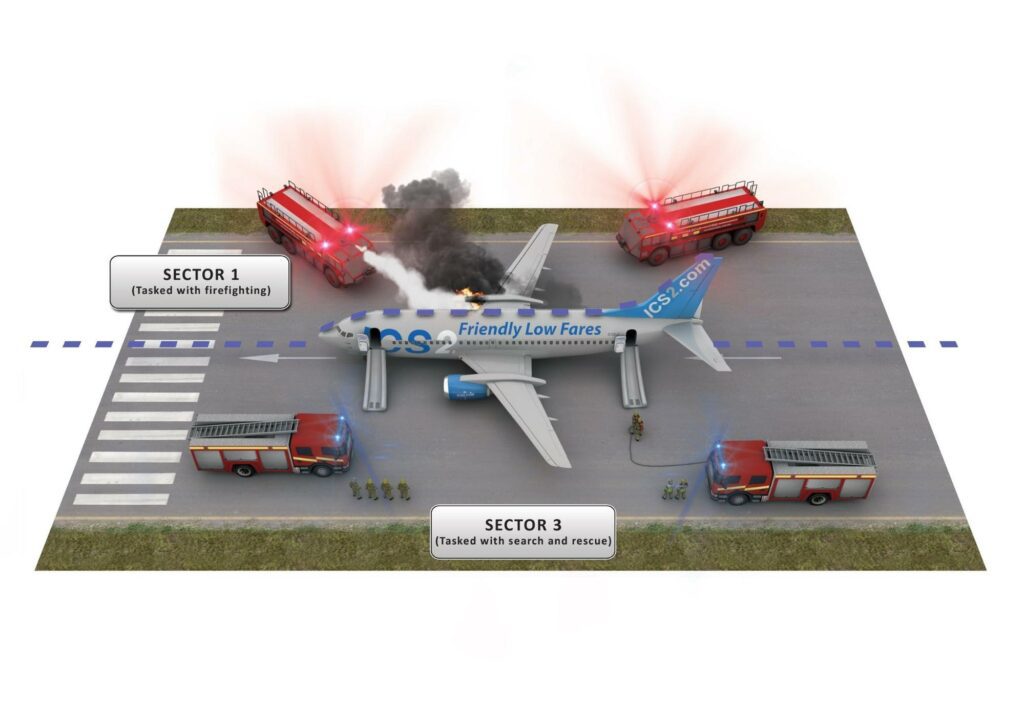Sectorisation
Control Measure Knowledge
Understanding the span of control concept is important when managing a large amount of activity and information. Dividing an incident into sectors may support this by providing a clear reporting structure. Sectors should only be used if necessary and commanders should keep the structure as simple as possible. This is in order to reduce the possibility of barriers to the flow of information between personnel and the incident commander.
An incident commander may be able to effectively control small incidents without the need to implement additional command arrangements. If they can monitor tasks by moving around the incident ground, it is unlikely that sectors are needed.
However, operations often take place in more than one location during an incident, for example, at the front and rear of a building. This may result in the incident commander being unable to effectively manage operations and supervise safety, in which case sectorisation should be considered.
Sectors should be introduced when the demands placed on an incident commander are high. In these cases, it is essential to delegate responsibility and authority. This ensures that the level of command and safety monitoring is appropriate for all activities.
The incident commander should also consider appointing sector commanders to supervise personnel and command areas of operations if the scale of operations grows.
If an incident becomes more complex with a growing number of sectors in use, the incident commander may choose to appoint an operations commander. This is to manage the sectors and reduce the span of control for the incident commander. If the number of sectors grows, they may need to group the sectors under more than one operations commander. The all-hazards command approach is able to scale up to any situation as required.
Even when tasks are delegated, the incident commander remains responsible at all times for overall incident management. They should remain focused on command and control, the use of resources, incident planning and the co-ordination of sector operations.
To support sectorisation, fire and rescue services need to identify the roles likely to be performed in the command team. These will include the level of skills and appropriate responsibilities for each command role and function.
Personnel should be made aware of the various command team roles and functions in the host fire and rescue service and assisting fire and rescue services. It is important to take steps to ensure that the roles and functions are also understood by other agencies. Establishing joint working protocols with neighbouring fire and rescue services, and other agencies, may help to safely implement and effectively control sectorisation of a multi-agency incident.
Fire and rescue services should have appropriate arrangements, including resources and equipment, in place to record information at command points and in sectors. This may include command support teams, command boards and control units. Key information about the sectorisation should be recorded, including:
- The tactical mode
- Number of personnel working in the sector
- Identified hazards and risks
Information recording may be happening at multiple locations; care needs to be taken to ensure critical information is recorded and retained.
The creation of sectors should only occur on the instruction of the incident commander to meet the demands of an incident. Sectors can apply to a defined area of a building, such as the vertical features of tall buildings, or to geographical features. Sectorisation at transport incidents can be more complex to define. Sectors can also be used to control functional areas, such as a safety sector. Unless there are exceptional circumstances, the use of sectors should follow the standard models.
Four sectors
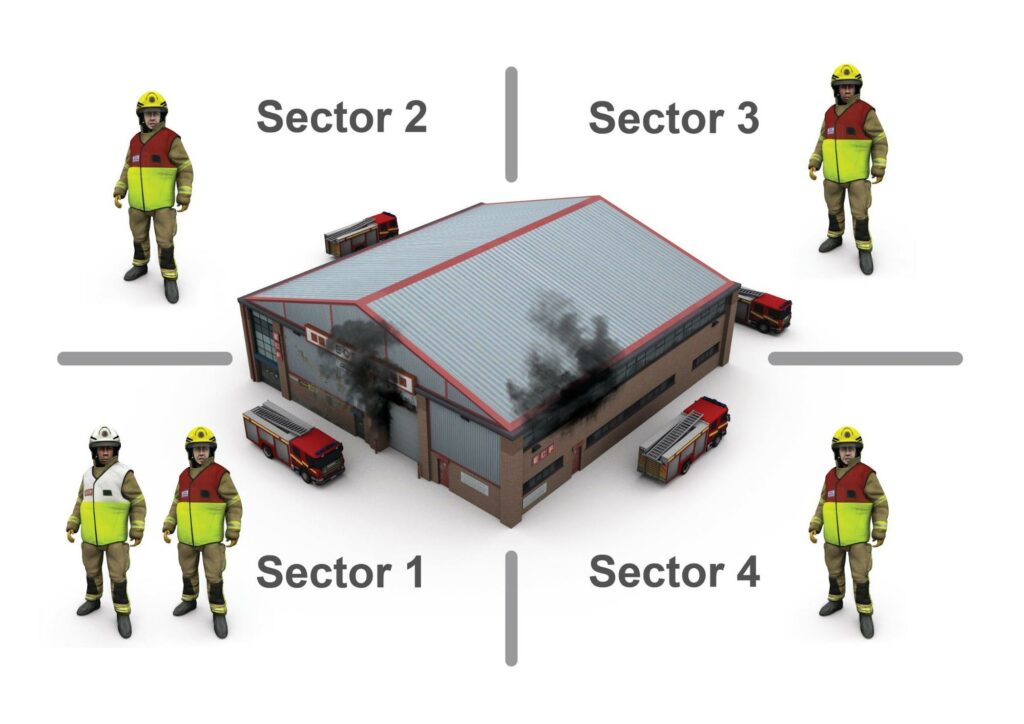
Five sectors
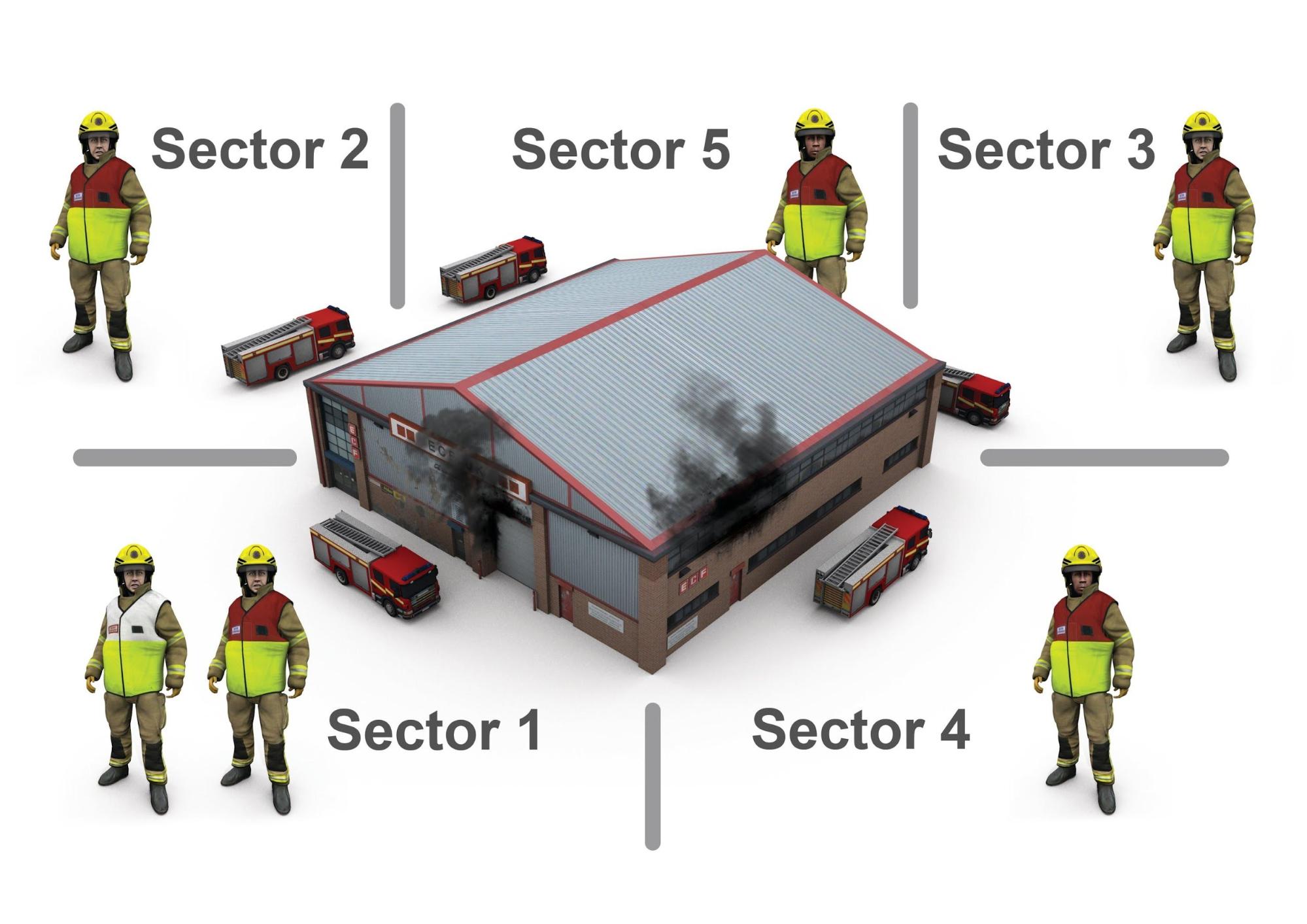
Using this approach the front of a simple building is Sector 1. Progressing in a clockwise direction, Sector 3 is normally at the rear. Sector 1 could also be the main scene of operations if this is not the front. Where this is the case all personnel should be made aware
This will ensure consistency at major or cross-border incidents where crews attend from two or more services. A plan showing demarcation of sectors at the command point can be useful for briefing purposes.
There may be some buildings or environments that do not suit the standard model. In these cases it is important to designate the sectors carefully. There needs to be a good understanding of the physical boundary and operating parameters, and this should be communicated to avoid confusion.
Vertical sectors
The standard model of Sector 1 being the main scene of operations would be difficult to use in some situations for example, in a multi-storey building or structure where operations are over several levels. The vertical sector model is used to maintain effective spans of control when sector commanders are remote from their scene of operations.
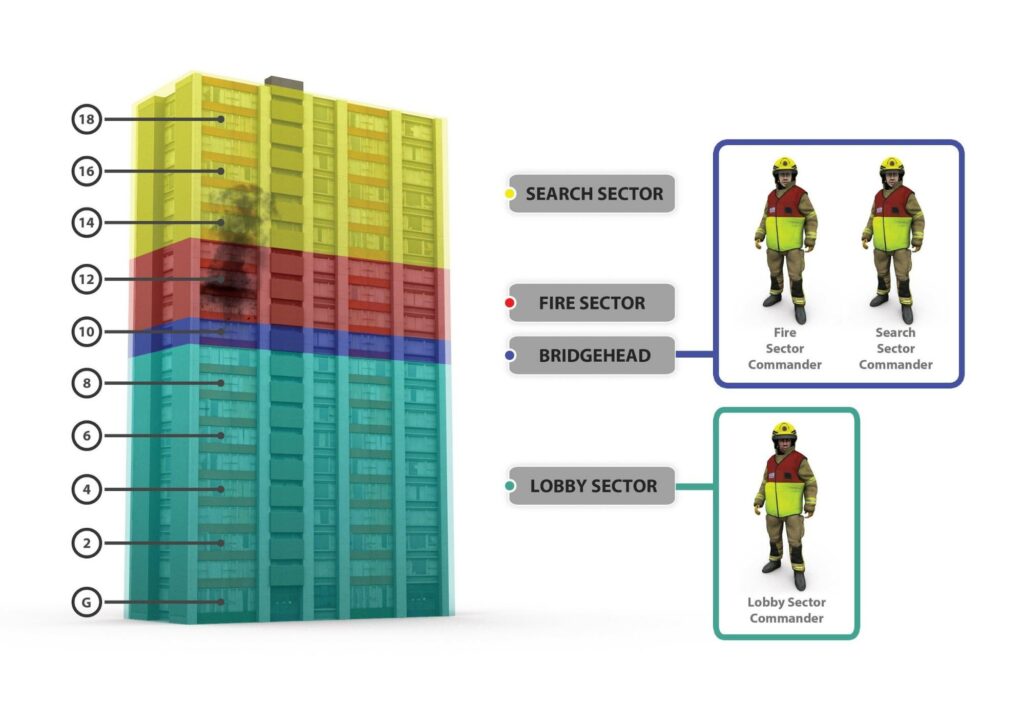
Sectorisation should take account of the restrictions of operating in an environment where the fire floor is a barrier to accessing the areas above. The entire area above the bridgehead should be considered a hazard area in a tall building.
It may only be necessary to operate a single operational sector internally, with firefighting and support sectors operating outside. More than one internal sector may be required at an incident where a large number of personnel are firefighting, searching, or ventilating; this is to ensure that the commander’s span of control is not exceeded. The zones of activity within the structure, for example, internal firefighting operations, should be identified using the following examples.
Fire sector
This is an operational sector and would be the main area of firefighting and rescue operations. It consists of the floors from the bridgehead to the fire, the floors directly involved in fire, plus one level above. The fire sector commander will, on most occasions, need to be located at the bridgehead directing operations.
Bridgehead
This is normally two floors below the fire floor, provided they are clear of smoke. It is a location rather than a sector on its own. If the distance from the ground floor lobby to the bridgehead is more than two or three floors, and spans of control require it, the use of a lobby sector should be considered.
Search sector
This is an operational sector and is located above the fire sector where search and rescue, ventilation and other operations are taking place. Where possible, the search sector commander should be located at the bridgehead with the fire sector commander. If this is not possible, they should be located one floor below the bridgehead, or where not practical, the nearest suitable alternative location.
Lobby sector
This is a support sector and would cover the area of operations from the ground floor lobby to the bridgehead. The lobby sector commander will act as the co-ordinator of all the logistics needed by the fire sector commanders and search sector commanders. The lobby sector commander would also co-ordinate all operations beneath the bridgehead, including salvage and ventilation. The lobby sector commander is normally located at the building access point.
This system of sectorisation provides for flexibility. There may be times when other approaches are needed. For example, it may be necessary to have more than one sector per floor in a complex building, or a tall building may require two fire sectors, each with its own bridgehead. These may be operating in different stairwells with an operations commander co-ordinating from the lobby area.
These principles can be applied to other situations where vertical, internal sectors are necessary, for example at basement fires. In this case the search sector may extend above and below the fire, and the lobby sector may be located outside the building.
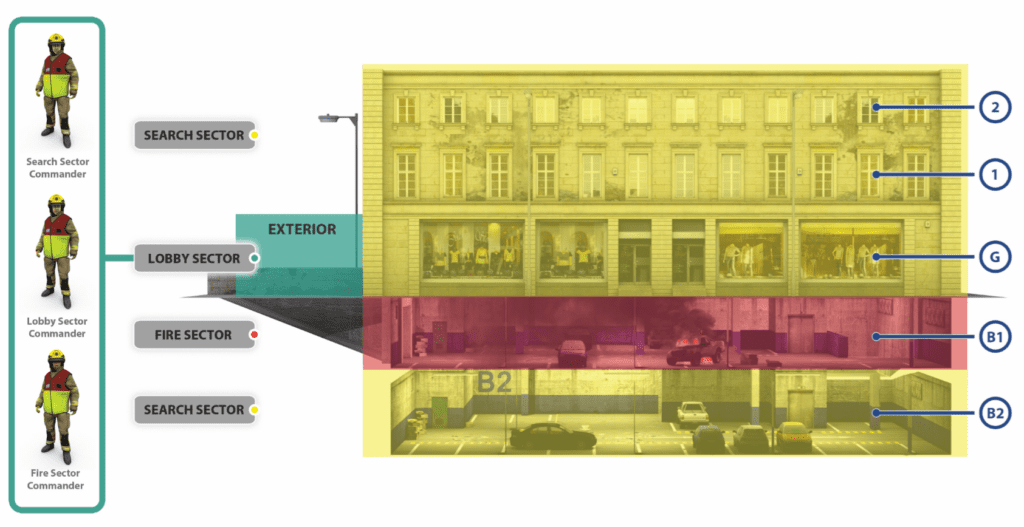
Sectorisation of vessels
Sectorisation of a vessel will depend on the access point to the vessel. Because of the risk of firespread through ventilation shafts or large compartments adjacent to multiple decks, there may also be a need to divide sectors into deck levels. Alternatively, on a vessel where only an individual compartment or a larger area may be involved, sectorisation can be undertaken by giving the sector a name, for example, forward hold or engine room.
Sectorisation of wildfires
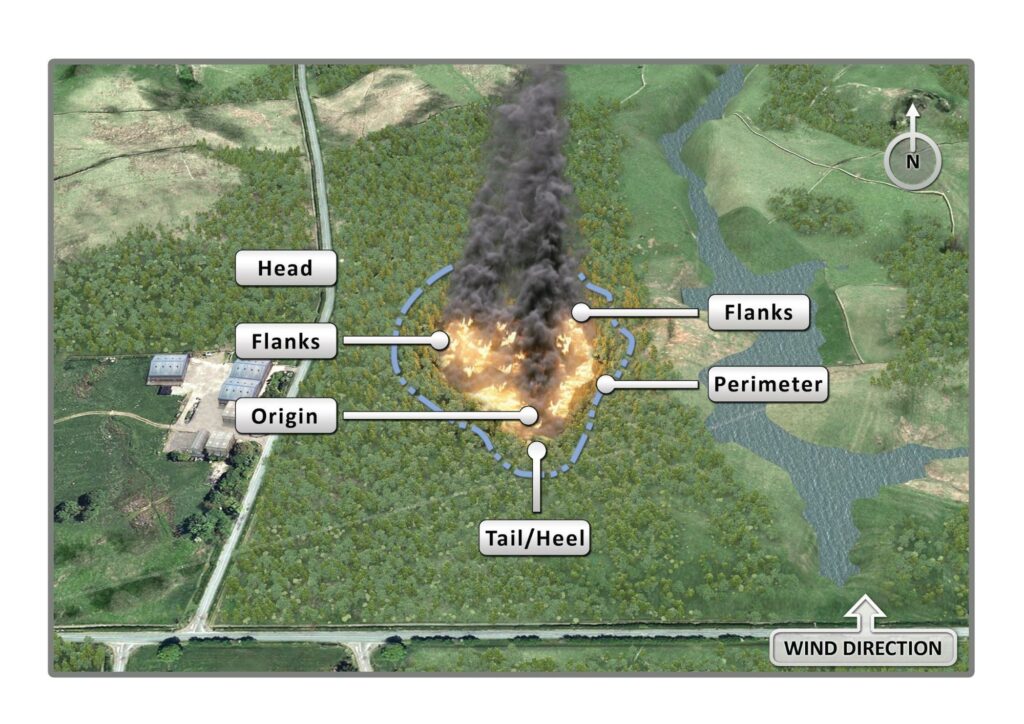
At large, complex or protracted incidents, where the fire behaviour is likely to change, it will be necessary to provide clarity regarding the geographical area covered by each sector. This can be achieved by setting sector perimeters based on easily identified features on the landscape, whether natural or man-made, which provide visual conformation of the sector limits and areas of responsibility.
In the following example, the fire has been divided into four sectors which use topographical features or changes in vegetation to clearly differentiate the sectors.
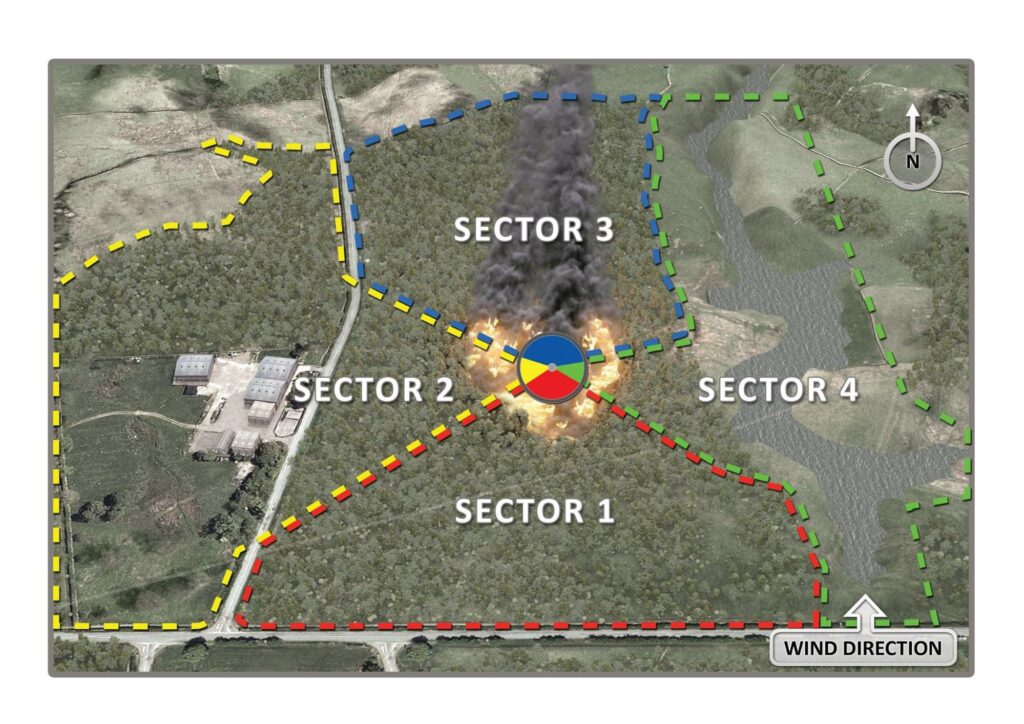
Sectorisation for road traffic collisions
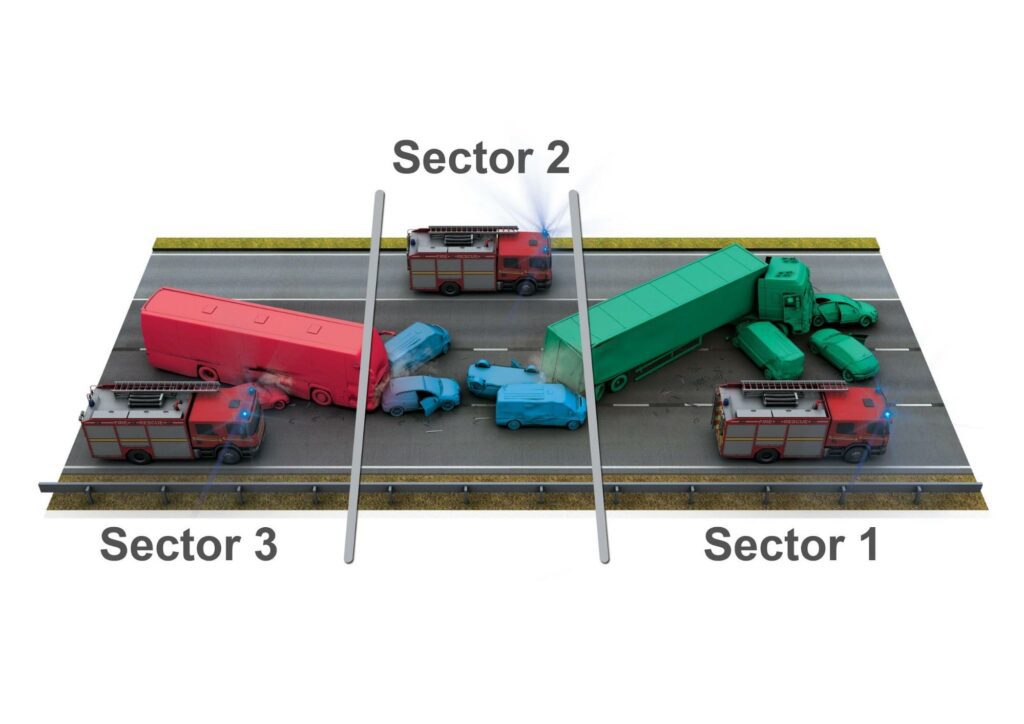
Sectorisation for a cabin fire in an aircraft
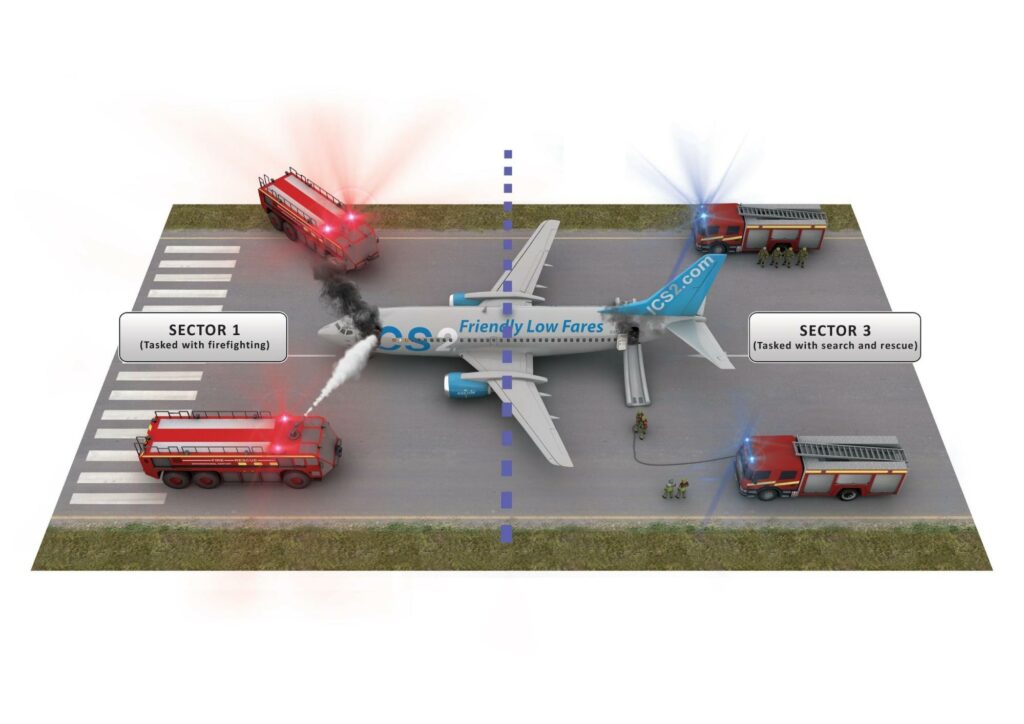
Sectorisation for an engine fire in an aircraft
